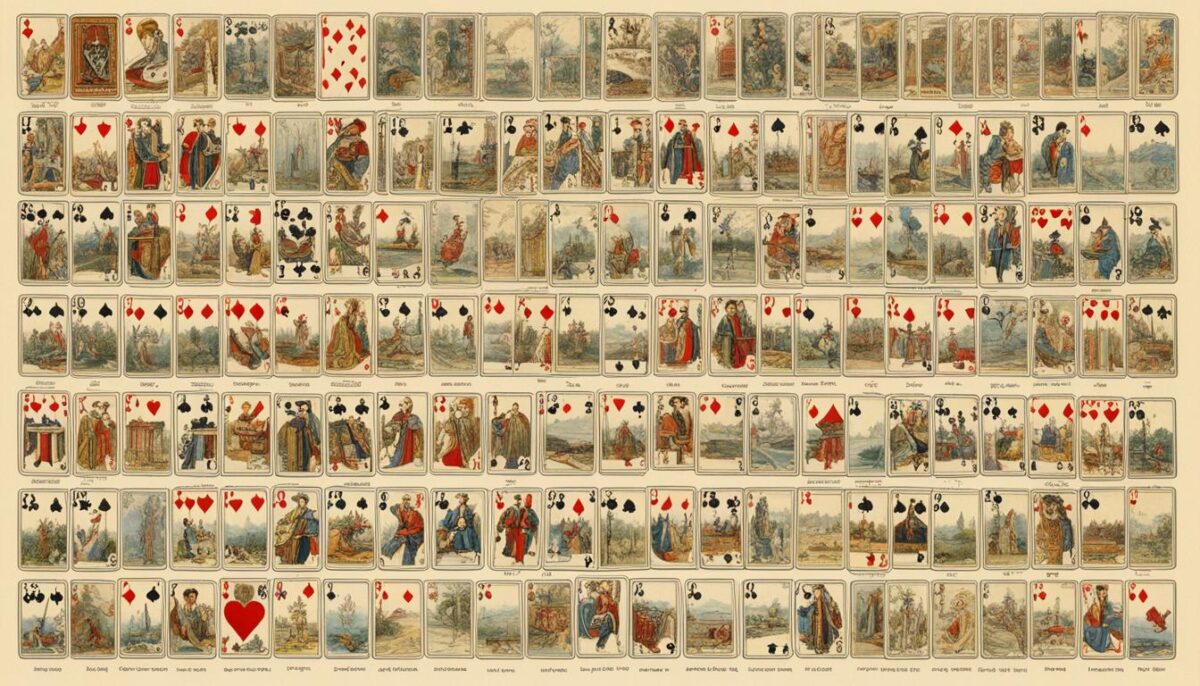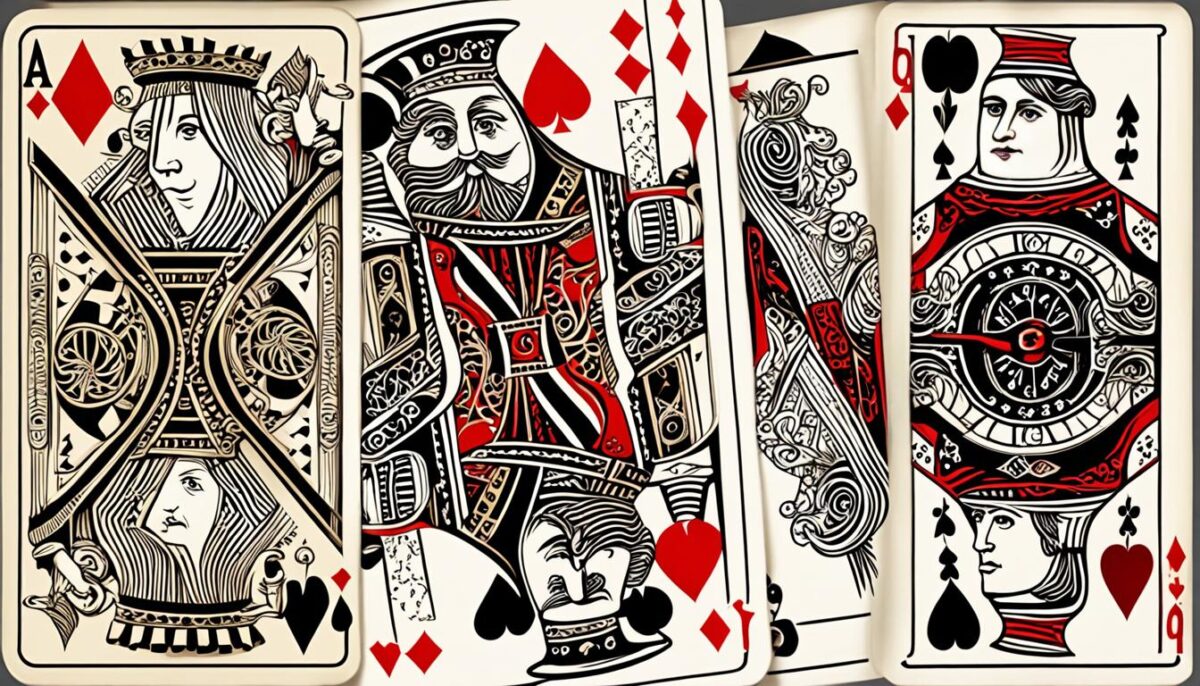Welcome to the fascinating world of playing cards! In this article, we will take a journey through time to uncover the rich history behind these beloved pieces of entertainment. From their ancient origins in China to their global popularity today, playing cards have evolved and influenced cultures across the globe.

Our exploration begins with the earliest known origins of playing cards, tracing back to ancient China in the 9th century. We will delve into how playing cards spread to other parts of Asia, including India and the Middle East.
As we move forward in time, we will examine the pivotal moment when playing cards made their way to Europe during the 14th century. We will highlight the diverse cultural influences that shaped their design and gameplay, ranging from Italian, Spanish, and German traditions to French and English adaptations.
One significant development that revolutionized the production of playing cards was the invention of woodblock printing. We will explore how this innovation allowed for faster and more widespread distribution, paving the way for the global popularity of playing cards.
Stay tuned for the next sections, where we will delve into the evolution of playing card designs and games, as well as the global impact and modern-day significance of these timeless and captivating artifacts.
Evolution of Playing Card Designs and Games
Playing cards have come a long way since their earliest origins, evolving both in terms of design and gameplay across different countries and regions. Let’s explore the fascinating journey of playing card designs and the introduction of various games that have shaped their popularity and cultural significance.
Playing Card Designs: From Traditional to Unique
Playing card designs have transitioned from simple suits and court figures to intricate and artistic patterns. Across different cultures, various countries have adopted their own distinct styles and symbols, adding a touch of uniqueness to their decks. For example:
In France, the traditional suits of hearts, diamonds, spades, and clubs became widely popular. The French suits introduced intricate detailing and elegant designs, which eventually influenced the modern standard deck seen today.
In Germany, the Skat pattern gained prominence, featuring unique suits such as acorns, leaves, hearts, and bells. This design variation is still used in German card games.
Playing cards, with their diverse designs, demonstrate the rich cultural heritage and artistic expression prevalent in different parts of the world.
The Birth of Playing Card Games
With the emergence of playing cards, new games entered the scene, adding a new dimension to their usage. Playing card games, such as tarot and poker, have not only provided entertainment but also influenced the popularity and cultural significance of playing cards as a whole.
Tarot cards, originally used for divination purposes, gradually transformed into a popular gaming deck in Europe during the 18th century. The tarot deck, with its distinctive trump cards, served as an inspiration for various card games.
Poker, on the other hand, originated in the United States in the early 19th century and quickly gained worldwide popularity. The game revolutionized the way playing cards were used, and its influence can still be felt in today’s gaming culture.
Customized Decks for Specific Games
As playing cards continued to evolve, game-specific customized decks emerged to enhance the playing experience. These specialized decks were designed to cater to the unique requirements of different games, ensuring optimal gameplay and engagement.
One such example is the bridge deck, specifically crafted for the game of bridge. The bridge deck includes additional markings on the cards, making it easier for players to communicate bidding information.
Another instance is the euchre deck, which is used for playing the popular card game euchre. The euchre deck is typically a modified version of the standard deck, with specific cards removed to suit the game’s mechanics.
These customized decks showcase the adaptability and versatility of playing cards, providing players with an immersive gaming experience.

As playing cards evolved, they became more than just a means of recreation. They became symbols of cultural identity, artistic expression, and intercultural exchange. The intricate designs and the wide variety of playing card games have contributed to their enduring popularity across the globe.
Global Impact and Modern-Day Significance of Playing Cards
Playing cards, originally originating in ancient China during the 9th century, have evolved into a globally recognized form of entertainment. The proliferation of playing cards across Europe, America, and other parts of the world has not only sparked cultural exchange but also fueled international trade.
However, playing cards also became synonymous with gambling, leading to the establishment of casinos and gambling houses. The allure of card games such as poker and blackjack has captivated players for centuries and continues to shape the gaming industry today.
Beyond the realm of gambling, playing cards have infiltrated popular culture, making appearances in various art forms. From paintings to literature and movies, their symbolism and imagery have become iconic and highly recognizable. Playing cards have transcended their original purpose and have become a source of inspiration for artists and storytellers alike.
In the modern era, playing cards have not lost their relevance. They have seamlessly transitioned into digital gaming platforms, captivating a new generation of players. From mobile apps to online casinos, the popularity of digital card games has grown exponentially, creating a vibrant community of players from around the world.
